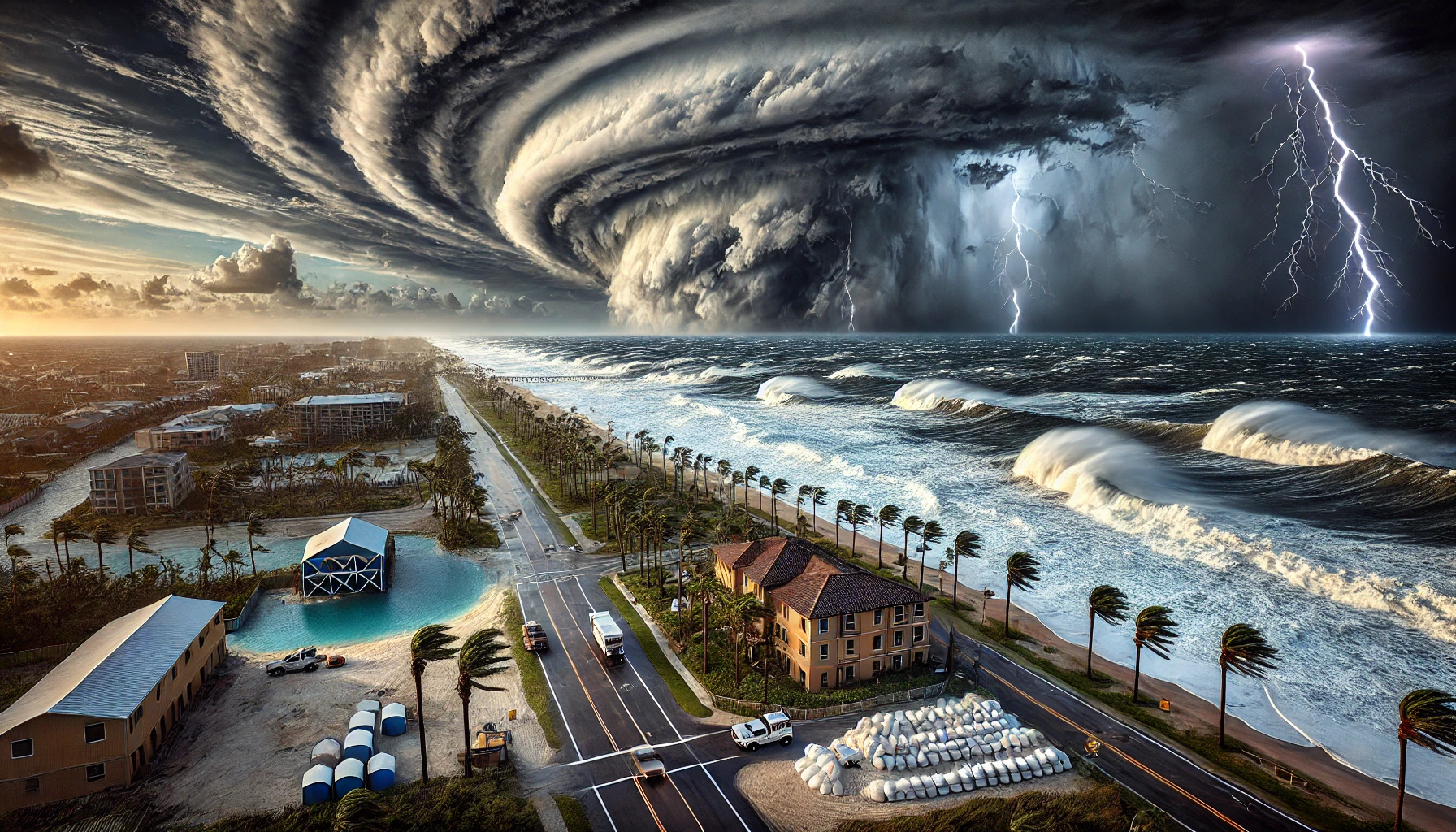
Hurricane Helene Approaches Florida with ‘Unsurvivable’ Storm Surge, Threatens Southeastern U.S.
Created on 26 September, 2024 • News • 3,902 views • 2 minutes read
Hurricane Helene, a dangerous Category 3 storm, is bearing down on Florida's Gulf Coast, bringing with it an "unsurvivable" storm surge of up to 20 feet in Apalachee Bay.
Hurricane Helene is currently on a dangerous path toward Florida's Gulf Coast, where it is expected to make landfall as a powerful Category 3 or 4 storm. As of Thursday morning, the National Hurricane Center (NHC) has issued hurricane warnings stretching across Florida's Big Bend region, with the most significant threat being an "unsurvivable" storm surge that could reach up to 20 feet in height in Apalachee Bay. This area is particularly vulnerable due to its shape, which could trap rising waters and lead to catastrophic flooding.
Helene's impacts are expected to extend far beyond Florida, with Georgia, the Carolinas, and even parts of Tennessee and Kentucky bracing for severe weather. These regions could experience strong winds, flash flooding, and prolonged power outages. The storm's fast movement will allow damaging gusts to penetrate well inland, a rare occurrence for hurricanes of this magnitude. As a precaution, state governments across the southeastern U.S. have declared emergencies, and FEMA has already pre-positioned resources in affected areas.
In anticipation of the storm, many coastal communities have issued mandatory evacuation orders, while schools and businesses have closed in preparation for Helene's arrival. Residents in areas like Wakulla County are taking steps to secure their homes and stockpile supplies, though some are choosing to shelter in place, despite evacuation orders. Shelves in local stores are emptying as people rush to gather essentials like water, food, and batteries.
Florida's Gulf Coast is no stranger to hurricanes, but Helene is expected to be one of the largest in terms of storm size and breadth. If predictions hold, it could be as significant as Hurricane Irma in 2017, known for its widespread devastation. The National Weather Service has emphasized the life-threatening danger posed by the storm surge, high winds, and inland flooding, warning residents to heed evacuation orders and prepare for the worst.
The storm formed earlier this week in the Caribbean, impacting parts of Mexico's Yucatan Peninsula before tracking northward across the Gulf of Mexico. As it intensified over warm waters, it grew rapidly into a major hurricane. In Mexico, heavy rains and high waves caused flooding and power outages in coastal areas.
As Helene moves closer to landfall, emergency response teams are on high alert, with search-and-rescue teams, power restoration crews, and supplies such as water and generators already positioned in vulnerable areas. The National Oceanic and Atmospheric Administration (NOAA) has predicted that Helene will bring heavy rainfall to parts of Georgia, South Carolina, and North Carolina, regions already saturated from earlier storms this season.
Residents in the path of Hurricane Helene are urged to complete their preparations, especially in areas under hurricane and storm surge warnings. Authorities are particularly concerned about the combination of storm surge and flash flooding, which could make it difficult for rescue teams to reach stranded individuals in the aftermath of the storm.
This year’s Atlantic hurricane season has been particularly active, with Helene becoming the eighth named storm. Experts have attributed the heightened activity to record-warm ocean temperatures, which provide more fuel for hurricanes to strengthen.
In summary, Hurricane Helene poses a severe threat to the southeastern United States, with Florida expected to bear the brunt of its destructive forces. The combination of high winds, extreme storm surge, and widespread flooding makes this a storm that could have lasting impacts on the region. Residents should remain vigilant, follow evacuation orders, and stay informed as the storm continues its approach.